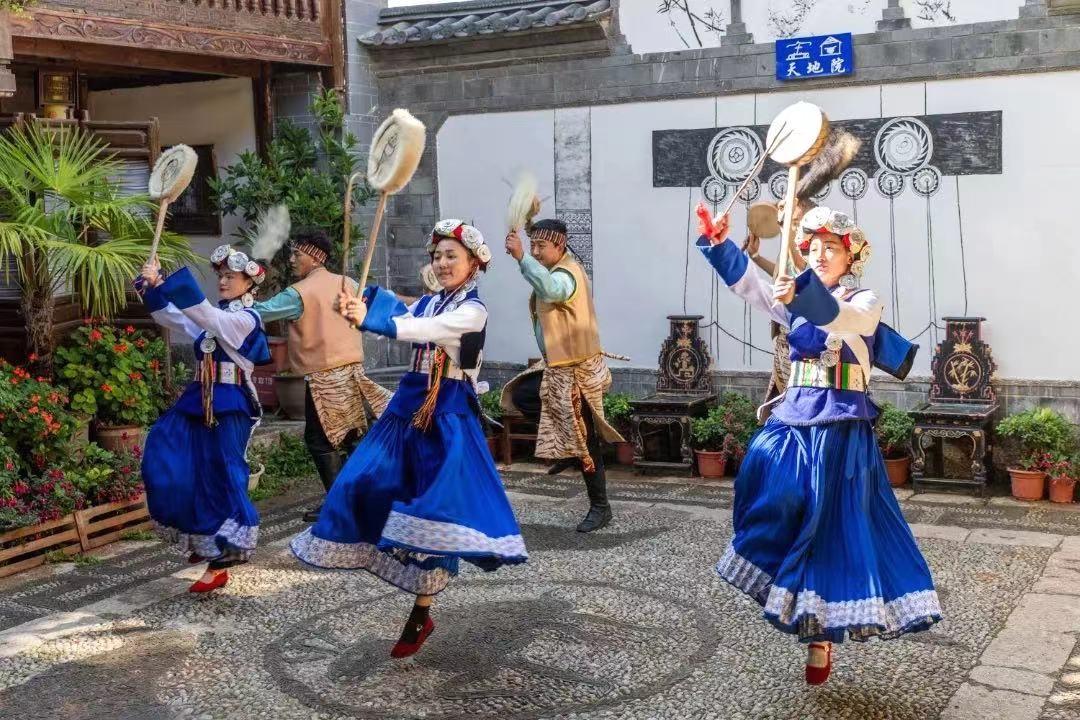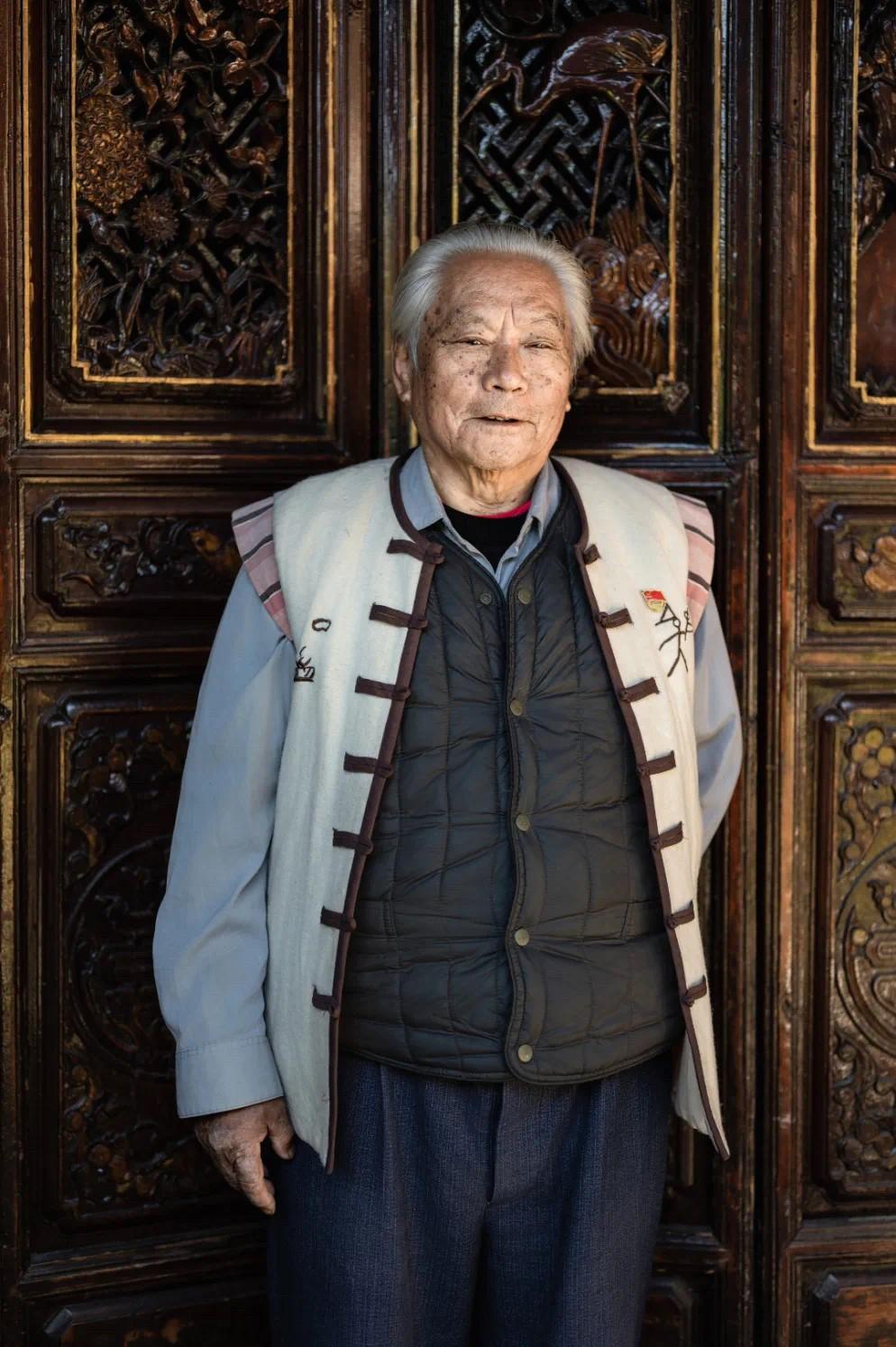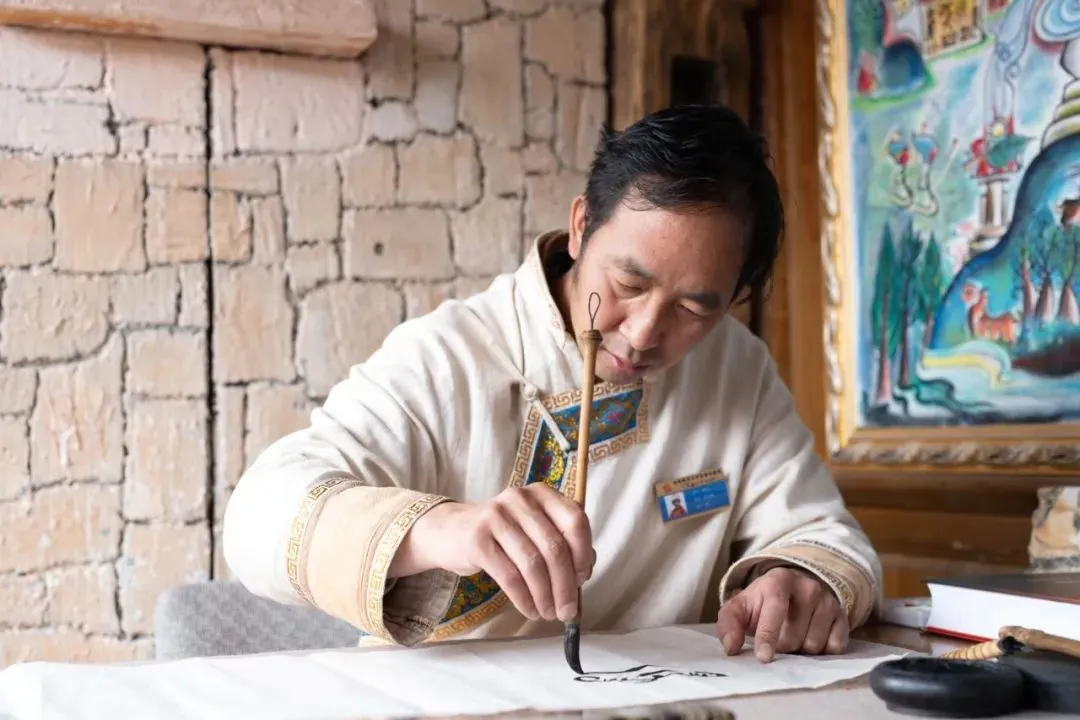The tales of Lijiang old town and its inhabitants
In the Old Town of Lijiang, culture serves as the lifeblood that defines its essence. Locals actively engage in safeguarding and passing on this rich heritage, allowing it to seamlessly blend into every facet of modern life.

The Naxi people dance along with the melodious tunes of “remeicuo” music.
Revealing the vibrant narrative of the Old Town
In the Heaven and Earth Courtyard of Dayan Old Town, Lijiang City, Yunnan Province, visitors are treated to a mesmerizing display of traditional Naxi folk song and dance. Accompanied by
“Remeicuo,” an enduring tradition that has been passed down through thousands of years, holds a special place as a collective folk song and dance of the Naxi people. At the Heaven and Earth Courtyard, tourists have the privilege of witnessing this “living fossil of song and dance.” He Xueguang, the 78-year-old manager, explained to visitors, “It is our ancestors’ remarkable legacy that has enabled us to lead a joyous and fulfilling life. Only by safeguarding and perpetuating our cultural heritage can we breathe life into the story of the Old Town.”
Every day, like clockwork, the ethnic song and dance performances commence at the Heaven and Earth Courtyard. Regardless of the crowd size, the passionate actors and actresses wholeheartedly devote themselves to the show, which has gone uninterrupted for over 2,000 days. These performers encompass a diverse range of backgrounds, including ordinary citizens, farmers, and college students. Spanning the generations, from the elderly to the middle-aged and the young, they bring the vibrancy of traditional culture into the homes of common people, and ensure that the essence of traditional culture remains alive and accessible to all.

He Xueguang is the 78-year-old manager at the Heaven and Earth Courtyard in Lijiang.
Reviving timeless memories through Dongba pictographs
The Dongba pictograph is known as “the world’s only living hieroglyphics” and serves as a “living fossil” of ancient civilization. It is also an important part of the Naxi cultural heritage. In 2003, the Naxi ethnic group’s ancient Dongba literature manuscripts were included in UNESCO’s Memory of the World, making it China’s third entry in the list.
An artwork featuring the “dancing” Dongba characters written on Dongba paper is an ideal keepsake. Visitors can have an excellent “writing and painting” experience at the Naxi Pictograph Painting Studio, which is located in Xianwen Lane, Guangyi Street, in the Old Town of Lijiang.
The studio is brimming with an assortment of Dongba paper. When presented on the unadorned Dongba paper, the animated Dongba hieroglyphics exude their own charm. The Dongba paper adorned with depictions of flowers, grass, birds, and animals silently narrate untold stories... Every symbol and every hue serve as a testament to the progression of an ethnic community.
Since its establishment in 2016, the Naxi Pictograph Painting Studio has welcomed over a million visitors and hosted over a hundred complimentary open classes. For its manager, He Runyuan, the most joyous moments come when he writes or paints the desired Dongba hieroglyphs for the visitors.
“It is also an innovation for us to incorporate Dongba pictographs into couplets, booklets, lanterns, paintings, and plaques,” He said. Recognizing the extensive journey ahead to preserve cultural heritage, he earnestly hopes that more individuals will participate in this endeavor.

He Runyuan writes the Dongba hieroglyphs for the visitors.